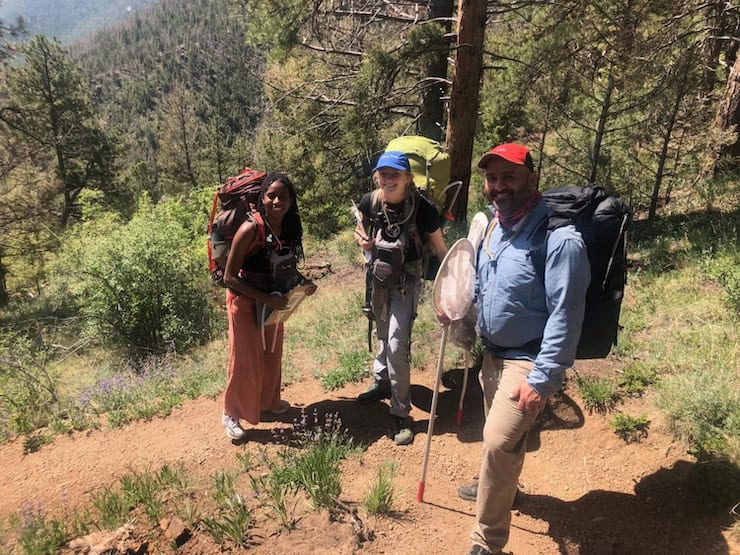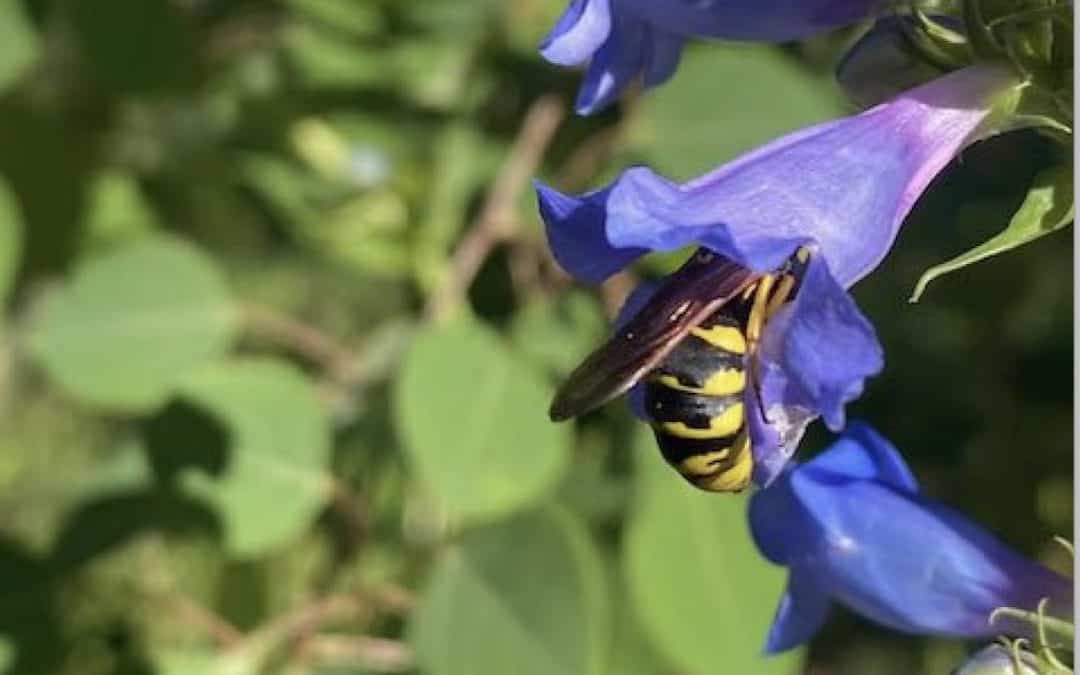University of Colorado team finds wildflowers blooming 17 days earlier than a century ago. Not all pollinators have kept up.
by Allen Best
Starting in 1910, ecologist Frederic Clements and a student, Frances Long, began documenting the interactions between local plants and their pollinators on the eastern slopes of Pikes Peak. They published their findings in 1923.
Starting in 1910, ecologist Frederic Clements and a student, Frances Long, began documenting the interactions between local plants and their pollinators on the eastern slopes of Pikes Peak. They published their findings in 1923.
Colorado warmed an average of 2.9°F between 1895 and 2022, according to Climate Change in Colorado, a 2024 report commissioned by the Colorado Water Conservation Board. Winter temperatures have been rising the fastest, an average 3.3°F since the gold rush of 1859.
Climate change has also decreased the snowpack in the West, reducing the amount of water available for mountain species in spring and summer.
Both warming temperatures and melting snow deliver vital environmental cues for plants and insects about when to emerge from their winter inactive states.
What difference has the warming made?
From 2019 through 2022, a research team led by the University of Colorado Boulder returned to the area of Pikes Peak where Clements had conducted his research.
Julian Resasco, associate professor in the Department of Ecology and Evolutionary Biology, and others analyzed 25 wild pollinator species, including bumblebees, wasps and flies. They also studied 11 flowering plants that the insects interact with. In all, there are a potential 149 pairs of interactions between the insects and plants.
They made their observations along hiking trails, in meadows, and near roads while seeking diverse habitats to capture the variety of flowering plants. They conducted their samples from late May to early September, a period that largely overlapped with the historical dataset left by Clements.
During the early sampling period, flower observations were conducted at lower elevations, rising in elevation as the season progressed and flowers began blooming at higher elevations. They collected data on plant-pollinator interactions from the base of the mountain to the summit at 14,115 feet. However, for this study, they compared data collected between approximately 7,500 and 9,500 feet in elevation, as they believe that was the elevation band of the original research. Elevation, of course, influences phenology.
Most of the areas surveyed were in the former Carnegie Institution’s Alpine Laboratory. It now is part of designated wilderness, the environment largely undisturbed by changing land uses. But, of course, the environment is greatly influenced by rising temperatures, caused largely by accumulating greenhouse gases.
They paid specific attention to the flowering plant species emphasized by Clements and his student a century before.
They found wildflowers were blooming about 17 days sooner than a century ago. Pollinators started to fly 11 days earlier.

Julian Resasco, right, and his two graduate students surveyed pollinators and wildflowers in the Pike National Forest near Colorado Springs. Photo/Andrew Gaier, CU Boulder. Top: pollen wasps are showing up much earlier than a century ago. Photo/Julian Resasco, CU Boulder
This fits into a large body of accumulating evidence about the effects of climate change on the phenology of many species. Phenology is the study of cyclic and seasonal natural phenomena.
The work of David Inouye at the Rocky Mountain Biological Laboratory is a “remarkable example of evidence of phenological changes from long-term data in Colorado,” says Resasco.
“Resampling historical studies can offer a way to get a glimpse at sometimes even longer periods, like we did here, documenting shifts over the scale of a century,” says Resasco.
See also:
- “Study finds complexity to climate changes underway at 9,500 feet in Colorado.” Jan. 12, 2023
- “Early flowers again this year? That’s good, right?” June 12, 2025
The study was published during September in The American Naturalist, a scientific publication. Lead author of the paper, “Phenological Shifts in Plants and Pollinators over a Century Disrupt Interaction Persistence,” was Dr. Leana Zoller, a former post-doctoral researcher in the laboratory at CU Boulder. Graduate students were co-researchers on this project.
Historically, pollinators were active before plants started flowering, but the study showed that plants have advanced more rapidly than pollinators.
If the trends continue, says Resasco, there could be mismatches in timing between pollinators and the plants they feed on.
Pollinators, including domestic honeybees and wild species, contribute to the reproduction of 75% of the world’s flowering plants and about 35% of the world’s food crops. Their decline could have far-reaching effects on both natural landscapes and agriculture.
This research was on Pikes Peak, but the impacts of climate change across the West are pushing plants and pollinators to kick off their seasons sooner. “These shifts in phenology are unfolding across Colorado, too,” says Resasco.
Colorado, he says, has extraordinary biodiversity and vast stretches of natural habitat on public lands. “Protecting these large, diverse and connected landscapes is essential to give that biodiversity a fighting chance.”
- After a misstep about nuclear, DIA now looking at all energy options - November 13, 2025
- A possible victory for moderate solar regs - November 10, 2025
- Should this have instead been called the Data Center Solicitation? - November 7, 2025






